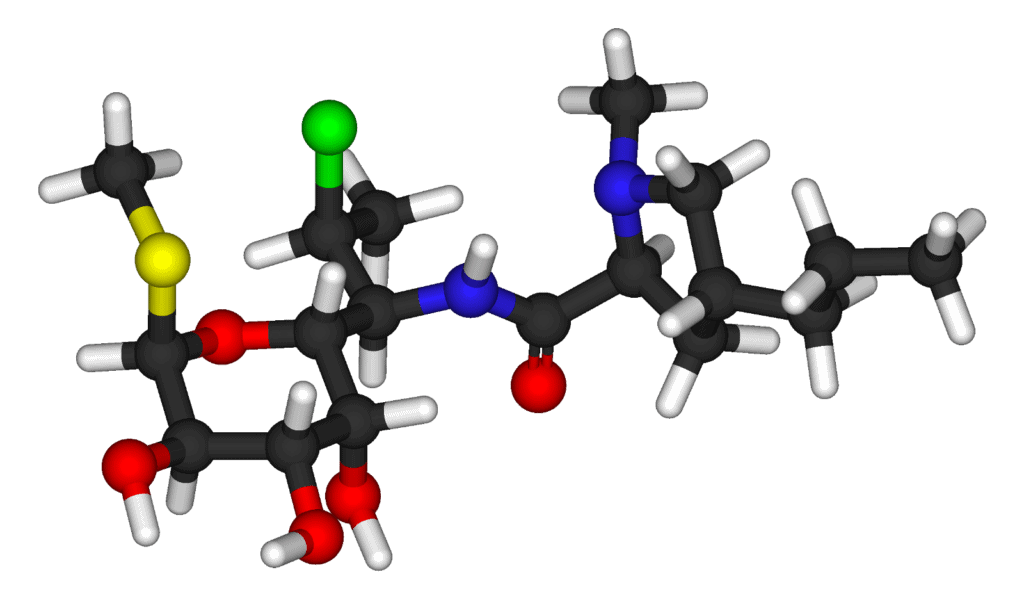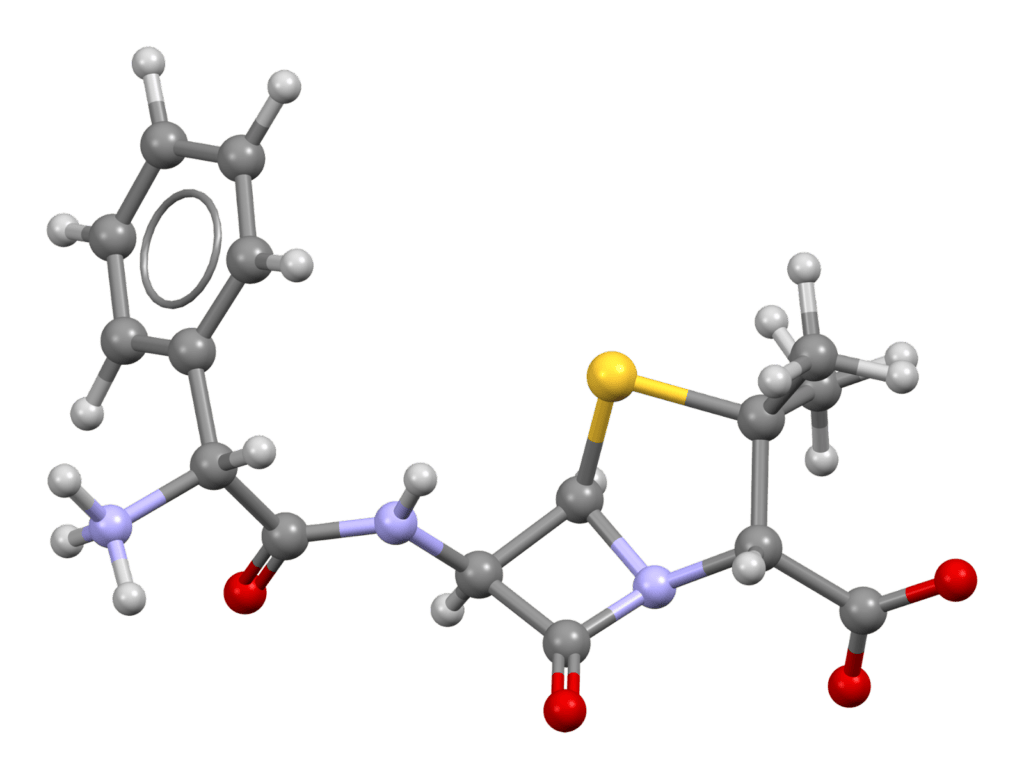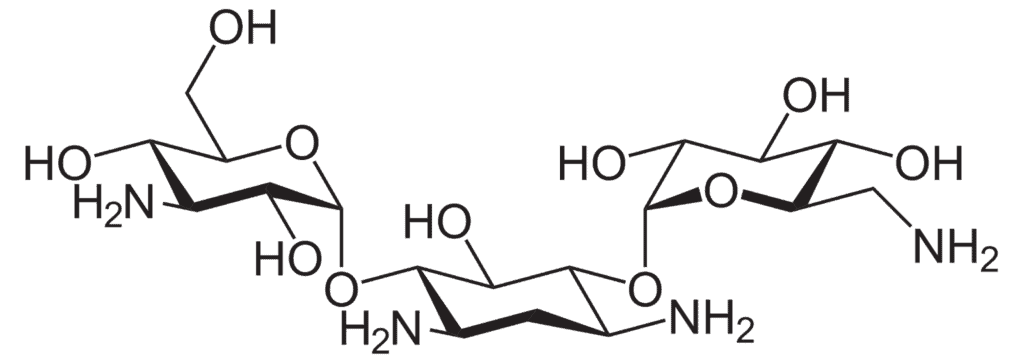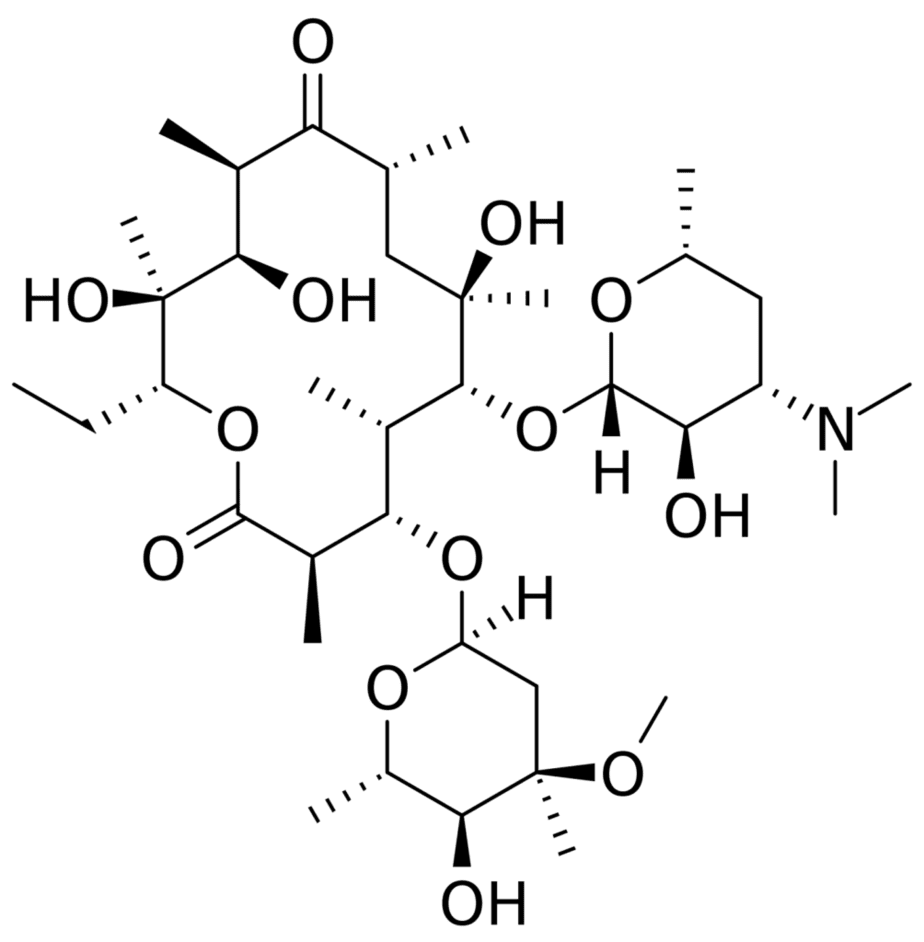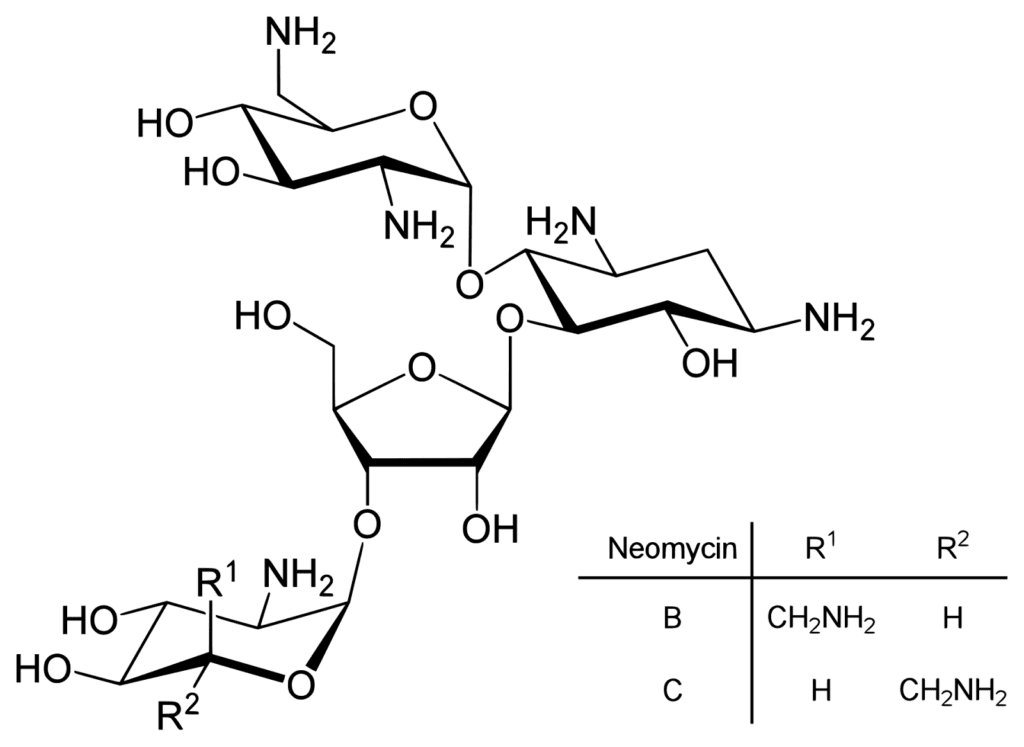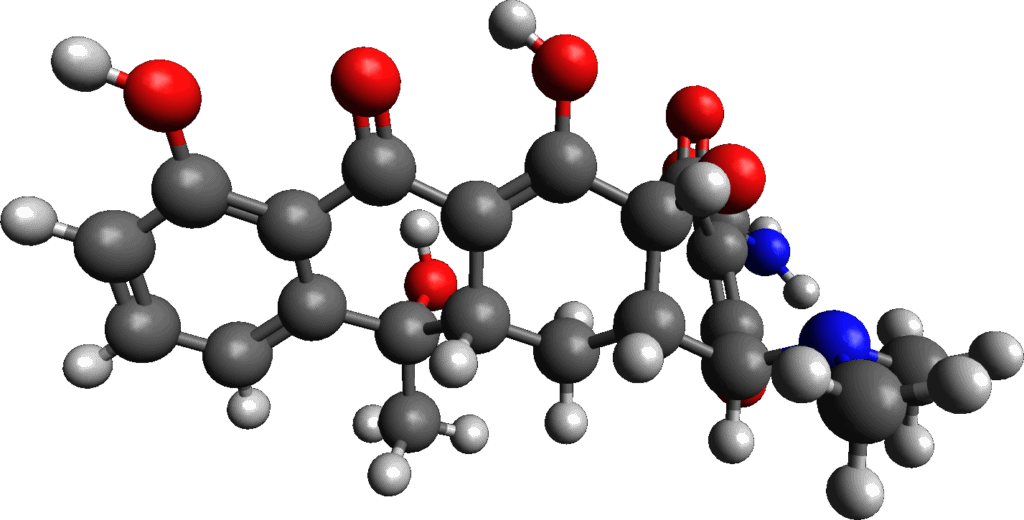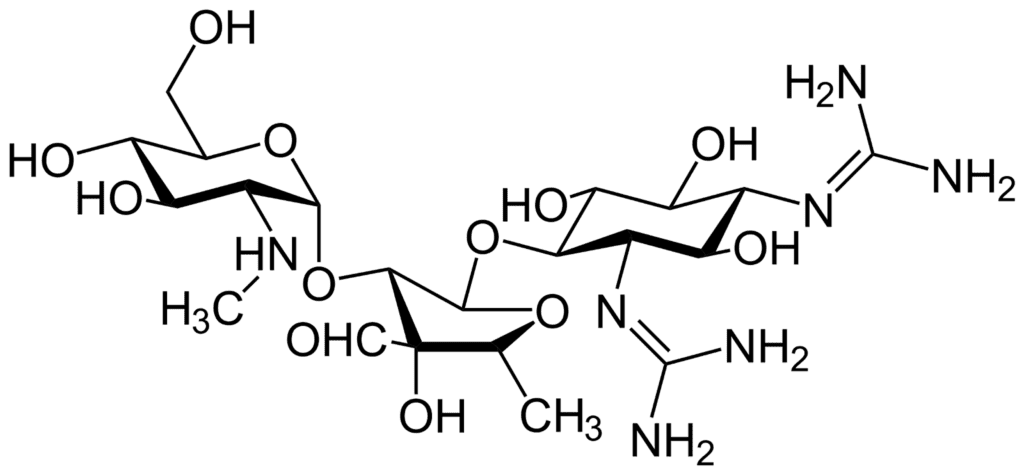We’ve all run to the doctors, even for minor infections. But there was a time when such bacterial or viral or fungal infections used to kill many! The medicines were limited, and what excited could only subside the symptoms and not cure the disease.
Thousands of children used to die due to some form of infection before the discovery of antibiotics. Before antibiotics, the options were limited when you got sick. Back then, when folks got sick, they would stay in bed, and sadly, many didn’t make it. So, it is safe to say that antibiotics are one of the most groundbreaking discoveries for the betterment of humanity.
So, here we will explore the 12 oldest anti-biotics in the world.
10. Clindamycin
Year Created: 1966
Scientist: Upjohn Company, American
Country of Origin: United States
In 1966, scientists introduced clindamycin, a type of antibiotic, to fight bacterial infections better. This was a big step forward in medical science as researchers looked for new ways to tackle germs causing different illnesses.
Clindamycin is an antibiotic that fights bacteria in the body. It’s effective against various types of infections, from skin issues to respiratory tract infections.
Did you know?
Doctors often prescribe clindamycin when other antibiotics may not work.
9. Ampicillin
Year Created: 1961
Scientist: Beecham, British
Country of Origin: United Kingdom
Ampicillin, following in the footsteps of penicillin, brought more options to the world of antibiotics. Ampicillin is a versatile tool used in different aspects of medicine and research. Ampicillin disrupts bacteria’s cell walls, making them vulnerable and unable to survive. This makes ampicillin versatile in treating bacterial infections and supporting scientific research.
Did you know?
Its special ability to interfere with cell walls is also useful in genetic research, creating openings for introducing foreign genetic material.
8. Kanamycin
Year Created: 1957
Scientist: Umezawa, Japanese
Country of Origin: Japan
In 1957, a team led by Dr. Hamao Umezawa at the Kitasato Institute discovered Kanamycin while screening soil samples for bacteria with antimicrobial properties. They isolated a potent antibiotic from a bacterium called Streptomyces Kanamyceticus.
Named after its source, Kanamycin demonstrated remarkable effectiveness against a wide range of bacteria, becoming a valuable addition to the world of antibiotics. Kanamycin works by disrupting the bacteria’s ability to make proteins, which is crucial for their survival.
Did you know?
Kanamycin belongs to the aminoglycoside family.
7. Vancomycin
Year Created: 1953
Scientist: Eli Lilly, American
Country of Origin: United States
In 1953, Dr. Edmund Kornfeld discovered vancomycin, a powerful medicine for battling antibiotic-resistant strains. This marked a turning point, offering a vital tool for infections that don’t respond to other antibiotics.
Vancomycin works by disrupting the creation of bacterial cell walls, a unique method that adds to its significance in the antibiotic toolkit. Backed by strong statistical evidence, it stands as a last resort when other treatments can’t do the job, highlighting its crucial role in medicine.
Did you know?
Vancomycin was Primarily used to treat infections caused by Gram-positive bacteria.
6. Erythromycin
Year Created: 1952
Scientist: McGuire, American
Country of Origin: United States
Discovered in 1952 by Dr. Abelardo Aguilar, erythromycin became a game-changer in fighting bacterial infections. Its development was a response to the need for alternatives to penicillin. Erythromycin disrupts bacterial protein synthesis, making it effective against a variety of infections.
Widely used since the 1950s, it has become a go-to antibiotic, showcasing its lasting impact in the medical field.
Did you know?
Erythromycin is known for its motilin-stimulating properties and is sometimes used to promote gastric emptying.
5. Neomycin
Year Created: 1949
Scientist: Waksman, Selman
Country of Origin: United States
Found in 1949 from soil bacteria, neomycin showcases the untapped potential in our environment. Neomycin disrupts bacterial protein synthesis, making it effective against various infections.
Neomycin’s applications extend beyond medicine, reaching into agriculture. Its historical uses in medicine and agriculture highlight its versatility, proving its value across different sectors since its discovery.
Did you know?
Neomycin is also used in surgical preparations to reduce the risk of infections during procedures.
4. Tetracycline
Year Created: 1948
Scientist: Finlay, Benjamin (and others)
Country of Origin: United States
Tetracycline, derived from soil bacteria, emerged as a game-changer in antibiotic research. Historically, it played a dual role, not just in human medicine but also in agriculture, offering a versatile solution against infections.
Its mechanism involves disrupting bacterial protein production, a key factor in its effectiveness against a wide range of infections in both humans and animals.
Did you know?
Tetracycline has a short half-life compared to other antibiotics, requiring more frequent dosing.
3. Streptomycin
Year Created: 1943
Scientist: Waksman, Selman (and others)
Country of Origin: United States
Streptomycin is a powerful weapon against tuberculosis, offering crucial insights into fighting diseases. Its discovery journey shows how we tackled challenges to find effective treatments. Streptomycin’s significant role in treating tuberculosis makes it a cornerstone in therapies for this disease. Understanding its evolution tells us how antibiotics continue to improve.
Did you know?
Streptomycin’s impact on tuberculosis treatment played a crucial role in lowering mortality rates, marking a significant milestone in medical history.
2. Sulfacetamide
Year Created: 1941
Scientist: Frank Berger (American biochemist)
Country of Origin: United States
Sulfacetamide, a synthetic wonder, represents the start of crafting antibiotics through chemical synthesis. Exploring how it was developed gives us a peek into the early days of creating antibiotics in the lab.
It was first used in dermatology, making its way into various medical treatments. Learning about its history in dermatology helps us appreciate its diverse journey.
Did you know?
Sulfacetamide has many side effects too, including skin irritation, dryness, allergic reactions, sun sensitivity, eye irritation, blurred vision, discomfort, and, rarely, systemic effects such as headache or nausea, with severe side effects, including thrombocytopenia and agranulocytosis.
1. Penicillin
Year Created: 1928
Scientist: Fleming, Alexander
Country of Origin: United Kingdom
In 1928, Alexander Fleming discovered penicillin by accident in his messy lab. The mould Penicillium notatum destroyed bacteria, laying the foundation for the antibiotic. It became a game-changer in medicine during the 1940s when scientists like Howard Florey mass-produced it, saving countless lives. Penicillin is the oldest antibiotic in the world.
This chance discovery revolutionized medicine, especially during World War II when mass production saved countless lives. Penicillin’s mechanism involves breaking down bacteria’s cell walls, a game-changer in treating infections.
Did you know?
Penicillin comes in various forms, including penicillin G, penicillin V, and ampicillin, expanding its applications.
Conclusion
The world is much different before such progress as antibiotics in medicine. The life expectancy was lower, and people didn’t have much choice when it came to sickness.
The invention of antibiotics was a turning point in the history of not just medical science but also humanity as a whole. These 10 oldest antibiotics in the world have made significant improvements in mortality rate and confidence in medical science.
Let medical science keep growing and, at some point, make us eternal! Just kidding!



